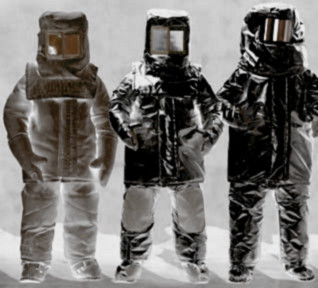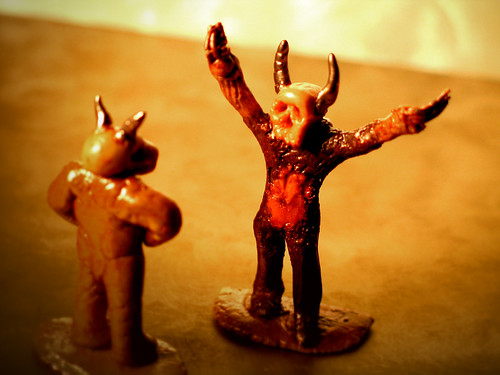Safety in pottery areas
Safety in pottery areas
Contents
1 General guidance notes
2 Protective clothing
3 Kilns
3.1 Electric kilns
3.2 Gas kilns
4 Pug mills
5 Glazes
5.1 Prohibition of certain glazes in pottery manufacture
6 Cleanliness in pottery areas
7 Fire precautions
8 Health surveillance
1 General guidance notes
The following information has been designed so that employees and students can become aware of the hazards that can be encountered in potteries and the precautions necessary when working within the pottery environment.
2 Protective clothing
a) Protective clothing shall be provided by the University for staff in pursuance of Regulation 9 for the use of all persons employed in pottery areas.
b) Protective clothing must be worn during all pottery work and classes. This may consist of either:
i) a washable apron with a bib
ii) washable overall
iii) apron with a bib, made of material impervious to water
c) Protective clothing should be laundered weekly.
d) Disposal respirators (dust-masks) should be used only once and then thrown away.
3 Kilns
Kilns should, where possible, be located in rooms separate from the general work areas. Where they must be installed in open areas they should be caged so as to allow access only through an outward opening gate. The kiln, or kiln room should be provided with adequate ventilation with a canopy for each kiln.
Face protection must be worn when viewing the interior of the red hot kiln. After firing the kiln should not be opened until it has cooled down to about 250°C.
No combustible materials should be kept adjacent to the kiln. Notices must be displayed near all kilns detailing the safe operating, shut down and emergency procedures. Warning lights and notices should be displayed when the kiln is firing.
3.1 Electric kilns
Electric kilns, because of the danger of electrocution, should have the following three safety devices
a) An automatic cut-out switch on each door.
b) An inter-locking key-switch by which the main supply must be turned off before the key which opens the kiln door can be used.
c) A warning light linked with the main supply, that is a 40 watt red lamp mounted above head height in a prominent position within the main work area.
3.2 Gas kilns
a) The firing regulations should be displayed near the kiln.
b) There should be flame control units if the kiln is not supervised during the warm-up period.
c) Flue pipes should have safety devices to prevent sudden down- draught.
d) Long flexible tubes should be avoided.
e) Freestanding cylinders of propane (where mains gas is not available) should be avoided. Wherever possible these cylinders should be kept in a cool chamber outside the main building and a supply pipe installed to the work area.
f) A careful routine should be established to prevent the risk of explosion by 'blow back' during lighting.
4 Pug mills
a) Pug mills should have a securely fixed stout finger guard across the loading hole.
b) There should be an inter-locking switch on the guard.
c) A list of trained users should be kept in accordance with the policy relating to workshop machinery.
d) The space surrounding the mill should be kept clear and must not be used for storing materials.
e) Adequate ventilation must be provided.
5 Glazes
5.1 Prohibition of certain glazes in pottery manufacture
The Control of Lead at Work Regulations 2002
Under section 5(1) of these Regulations "an employer shall not carry out work which is liable to expose any employees to lead unless he has made a suitable and sufficient assessment of the risk created by that work to the health of those employees and of the steps that need to be taken to meet the requirements of these Regulations"
Regulation 3(A) of The Control of Lead at Work Regulations 1980 (as modified by the Potteries etc. (Modifications) Regulations 1989).
a) The use of any glaze other than a leadless glaze or a low solubility glaze or a low solubility glaze in the manufacture of pottery is prohibited.
b) In this regulation:
'Glaze' does not include engobe or slip;
It should be noted that this prohibition does not apply to lead colours.
‘Leadless glaze' means a glaze which does not contain more than one per cent of its dry weight of a lead compound calculated as lead monoxide. 'Low solubility glaze' means a glaze which does not yield to dilute hydrochloric acid more than five per cent of its dry weight of a soluble lead compound calculated as lead monoxide when determined in the manner described below:
A weighted quantity of the material which has been dried at 100 degrees Centigrade and thoroughly mixed is to be continuously shaken for one hour at the common temperature with 1,000 times its own weight of an aqueous solution of hydrochloric acid containing 0.25 per cent by weight of hydrogen chloride. This solution is thereafter to be allowed to stand for one hour and then filtered. The lead salt contained in the clear filtrate is then to be precipitated as lead sulphide and weighed as lead sulphate.
c) Low Solubility Glazes (less than 55% soluble lead)
As determined in the above manner low solubility types of glaze can be used in all educational establishments, however the following precautions should be observed in any process involving the use of raw lead glazes, low solubility glazes or any form of lead compounds in the preparation of frits and colours:
Colour blowing must not be done by mouth.
i) Glazing should be done only in a room suitably equipped for the purpose.
ii) Since the danger of lead poisoning is greatest where lead or its compounds are inhaled or ingested, processes likely to give rise to these compounds in dust form in the air should not be allowed unless there is sufficient exhaust ventilation or a suitable respirator is used. Where a spray is used there should be a separate booth with an efficient exhaust fan.
iii) All benches and working surfaces should be washed or wiped down after use and splashes of glaze should be removed from floors and walls.
iv) Food should not be eaten in any room used for pottery making.
v) Only leadless glazes should be used inside vessels which could hold food or drink, since lead glazes can present a hazard when these metal s are extracted by acid present in food and beverages.
vi) Glaziers should make sure they are familiar with the contents of the D.E.S. AM 517/55 on lead glazes.
vii) Instructions given by the manufacturer should be observed and carried out at all times.
viii) Precautions should be taken when mixing glazes since the original contents can be unbalanced by the addition of oxides.
ix) Immediately after carrying out any of the processes, hands should be washed using a nail-brush.
6 Cleanliness in pottery areas
a) Pottery areas should be kept free from dust.
b) There should be wet sweeping of floors daily and a weekly cleaning down of all surfaces.
c) Once each term or every 3 months the area should be thoroughly washed including floors, walls and ledges, up to 2.3 m above floor level.
d) Where central heating is by the blown air system there should be suitable filtering and so arranged as to prevent a draught blowing directly onto a worker.
e) Ground flint or quartz must not be used for dusting kiln furniture or for making batt wash. Wherever possible flint should be kept in either slop or paste form.
f) Efficient and suitable vacuum cleaners with industrial filters should be used in all pottery and similar areas.
g) Asbestos must not be used for batts or shelving in all pottery and similar areas.
h) Under no circumstances should pots be rubbed down with sandpaper or wire wool.
7 Fire precautions
a) Kilns should be checked regularly for any exposed wiring or faulty elements.
b) The use of gas/water fire extinguishers in the area of electric kilns could result in electrocution. A suitable extinguisher should be kept in reach.
c) Tying off of elements (fish tails) can be dangerous. Any work done on kilns should be approved by the appropriate member of Buildings Division Staff.
8 Health surveillance
Employees are required to co-operate with the Health Surveillance Scheme adopted by the University
From:








